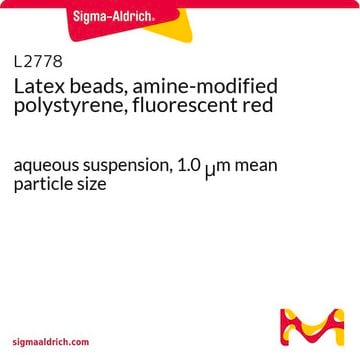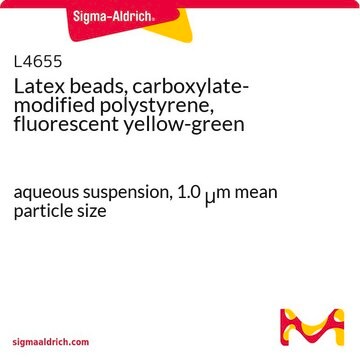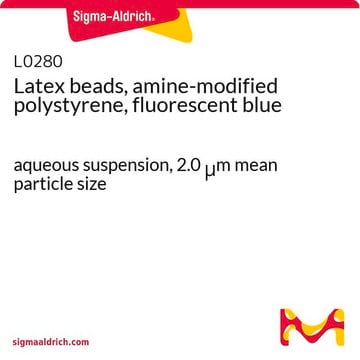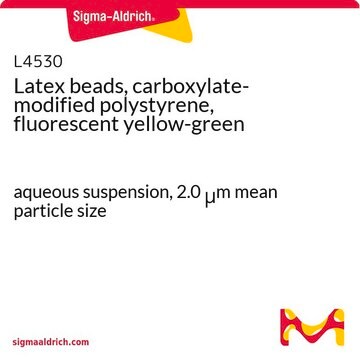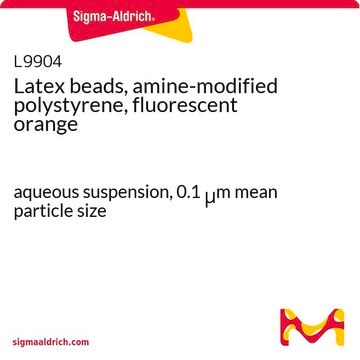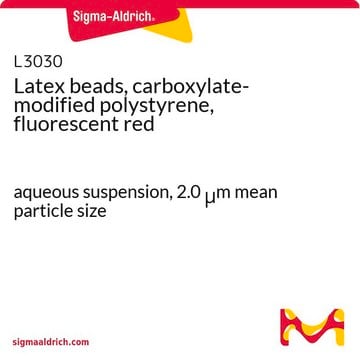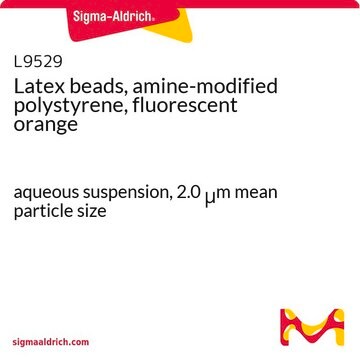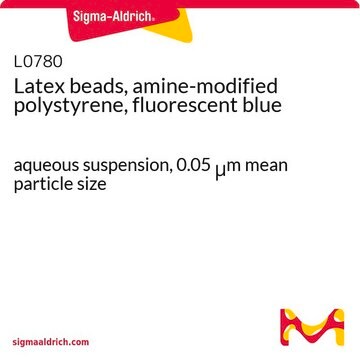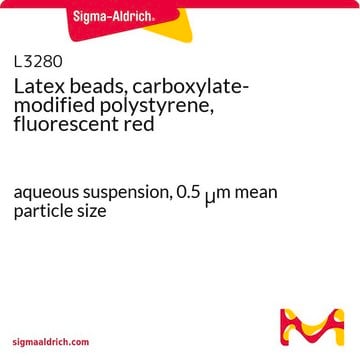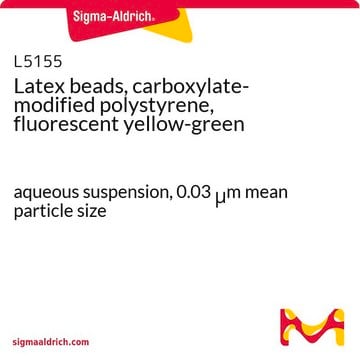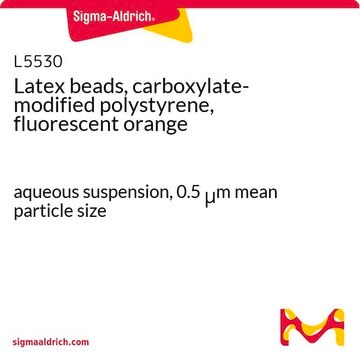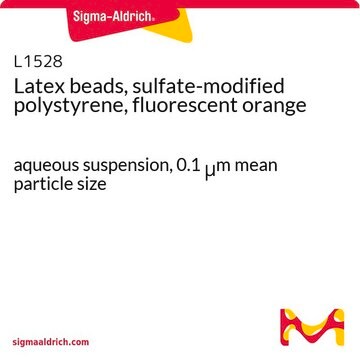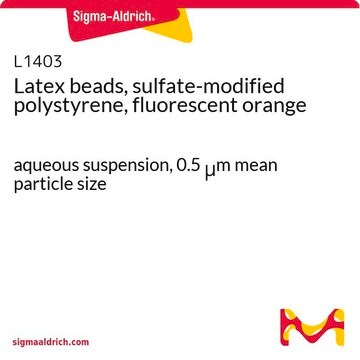The supplier does not provide the molecular weight or a molecular weight range for any of the latex beads. Polystyrene has a linear formula of [CH2CH(C6H5)]n. There are no exact values for the molecular weight available, although some internet sources may state a range of 100,000 to 400,000 amu. The polystyrene can be unmodified or surface modified. The dye is encapsulated inside the surface functionalized (amine or carboxylic) PS beads, which are well dispersed in the cationic surfactant assisted solution. The dye is not strongly bonded, and the PS may have a porous structure, so the dye can come out when changing to an organic solvent.
L1030
Latex beads, amine-modified polystyrene, fluorescent yellow-green
aqueous suspension, 1.0 μm mean particle size
Seleccione un Tamaño
US$ 213,00
Fecha estimada de envío27 de marzo de 2025
Seleccione un Tamaño
About This Item
US$ 213,00
Fecha estimada de envío27 de marzo de 2025
Productos recomendados
form
aqueous suspension
Quality Level
composition
Solids, 2.5%
technique(s)
cell based assay: suitable
mean particle size
1.0 μm
fluorescence
λex ~470 nm; λem ~505 nm
application(s)
cell analysis
¿Está buscando productos similares? Visita Guía de comparación de productos
Application
Biochem/physiol Actions
Storage Class
10 - Combustible liquids
wgk_germany
WGK 2
flash_point_f
Not applicable
flash_point_c
Not applicable
Elija entre una de las versiones más recientes:
¿Ya tiene este producto?
Encuentre la documentación para los productos que ha comprado recientemente en la Biblioteca de documentos.
Los clientes también vieron
-
What is the linear chemical formula and molecular weight of the various latex beads with product codes L1528, L1403, L9902, L9529, L9904, L9654, L0780, L0280, L3030, L3280, L5530, L2778, L4655, L4530, L5155, and L1030?
1 answer-
Helpful?
-
-
Hi, can you please provide me some information about the density of amines loaded on the surface of this particles?
1 answer-
The amine content is not specifically quantified on a lot-to-lot basis. Historical data indicate a total parking area of 30 to 300 angstroms squared per charge group. Unfortunately, no further information is available.
Helpful?
-
Active Filters
Nuestro equipo de científicos tiene experiencia en todas las áreas de investigación: Ciencias de la vida, Ciencia de los materiales, Síntesis química, Cromatografía, Analítica y muchas otras.
Póngase en contacto con el Servicio técnico